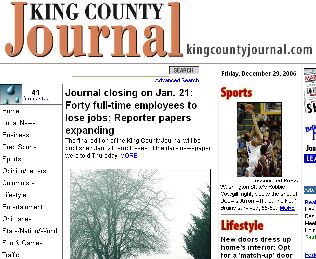The whales were supposed to be running. We had ocean-front rooms reserved for the New Year's weekend, and while the main idea of a weekend on the coast was peace and relaxation, we were thinking we'd be seeing some whales.
Less than sure a week out; but by the weekend, when Saturday and Sunday turned into only partly cloudy and occasionally even sunny days - a flukish rarity on the Oregon coast any time in the winter - we figured some whales would be out there.
And maybe they were, but we didn't spot them. We saw boats, a couple of which we first mistook fr the big animals as the little spots of white bobbed in the distance. (Plenty of crabbing boats out, to take advantage of the fine weather.) We weren't the only ones not to spot them. Driving by one of the lighthouses at Newport, we chatted with a couple who were among the official whale watchers, and they said they'd been skunked - nothing all day. The only consolation was that these whales of New Year's swim far out from the coast, and fast, on the north-south whale freeway. There are often fewer of them but easier to see in August, when they slow down, sniff the plankton and feed.
So we saw no whales. But we saw sea lions.

At Newport, you often hear sea lions, and you often see them from a distance. Up close is less common, and on one of the docks at the old Newport bay area, about a block from Mo's Annex, about a dozen of the fat creatures had beached themselves on sine planks floating in the water, directly below, only about six feet below, one of the piers where people checked the scenery. And there were a couple dozen more a hundred yards or so away, on a pile of rocks.
They made noise. Their barks were fiercer than a canine kennel, and they seemed to have an agenda. One of the lions was swimming around the pier area, in a near circle, periodically barking at the lounging lions and demanding a place with them on the boards. When he tried to jump up, the others would reach over, snap at him and bark fiercely. And then waddle back, stretch bckwards and look up to the sun. They seemed to be sunning themselves. And with the swimming exception, they seemed to be having a fine time,
So did the people. Who may not have got their whale fix, but certainly saw plenty of sea lion.
A thought for the new year, then. It will bring many things, not necessarily everything we expect or want. But if we look, we should find something of value.

 Initiative-by-rich-ideologue turned back. It's worth remembering that when the batch of initiatives funded by wealthy out of state interests reached ballot status in Washington, Oregon and Idaho (and elsewhere) in mid-year, the common assumption was that most of them at least would pass easily. Instead, they got slammed, decisively: Property measures in Washington and Idaho, budget measures in Oregon, and more.
Initiative-by-rich-ideologue turned back. It's worth remembering that when the batch of initiatives funded by wealthy out of state interests reached ballot status in Washington, Oregon and Idaho (and elsewhere) in mid-year, the common assumption was that most of them at least would pass easily. Instead, they got slammed, decisively: Property measures in Washington and Idaho, budget measures in Oregon, and more. 